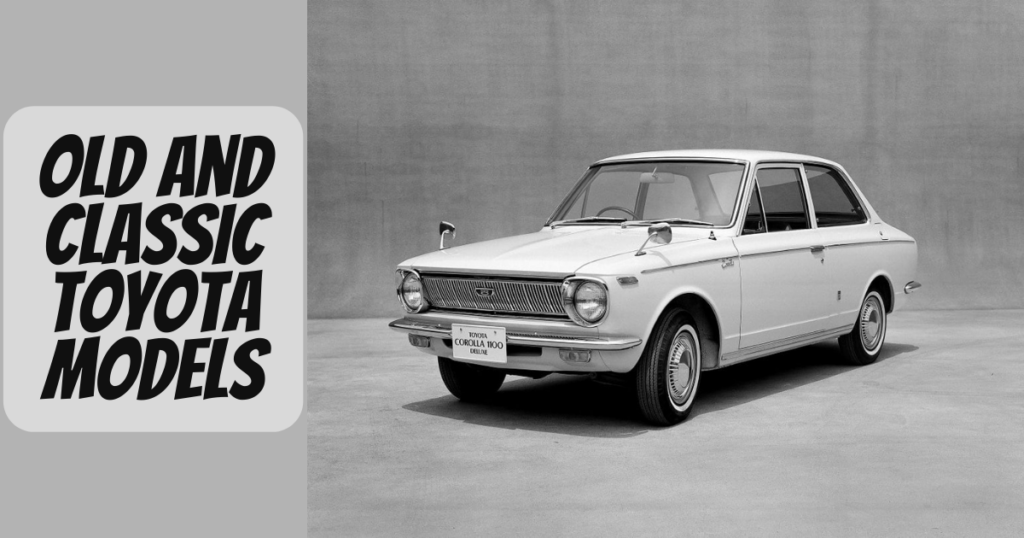
Toyota has a rich history and has developed significantly over the years. Toyota’s history began in 1933 when Toyoda Automatic Loom Works, Ltd., a Japanese business founded by Toyoda Sakichi, created a new division dedicated to manufacturing automobiles. The company’s first production vehicle, the Model AA sedan, was introduced in 1936.
In 1937, Toyota Motor Company separated from Toyoda Automatic Loom Works to become independent. The name “Toyoda” was also changed to “Toyota” at this time. This was due to the fact that “Toyota” was regarded as a more fortunate name in Japan.
Toyota has grown over the years to rank among the world’s biggest automakers, offering an extensive inventory of vehicles for sale in more than 190 countries. In this article, we will look at the old Toyota models that were once classics.
15 Historic Toyota Models Of All The Time
1. Toyota Avalon
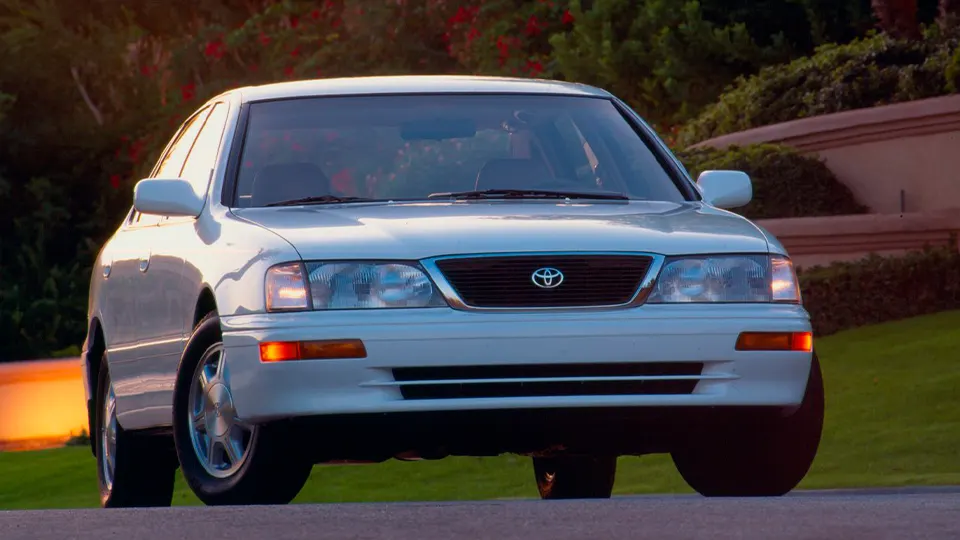
Toyota manufactures the Toyota Avalon in the United States; it serves as the company’s premier sedan in Canada, the United States, and the Middle East. The first Toyota Avalon rolled off the manufacturing line in Georgetown, Kentucky, on February 21, 1994, as a 1995 model. A second-generation model was introduced in Japan and the United States in 1999.
The Toyota Avalon was the first Toyota vehicle to come equipped with a navigation system without a touch screen in 2000. Based on a stretched Camry chassis, the Avalon featured a 3.0-liter V6 engine producing 210 lb-ft of torque and 192 horsepower. The Avalon’s power rating was raised to 200 horsepower and torque to 214 lb-ft in 1997.
The Avalon was powered by a 1MZ-FE engine with VVT-i. Early versions of the VVT-i 1MZ had an EGR block-off plate on the exhaust manifolds, a cast-aluminum intake manifold, and a dual throttle body. The intake manifold was replaced with an ABS plastic one in later models to reduce weight further and keep costs down. Toyota ceased production of Avalon in 2022.
2. Toyota C-HR
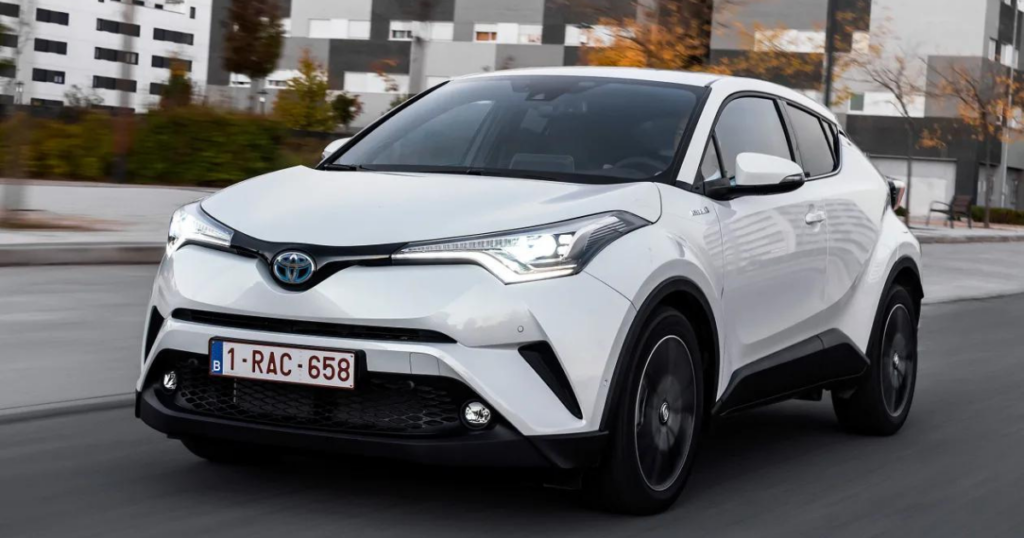
The Toyota C-HR has been available as a subcompact crossover SUV since its debut in 2016. The project was initiated in 2013 by Hiroyuki Koba, the head engineer of Toyota. The C-HR production model made its debut at the Geneva Motor Show in March 2016 and went into production in November of the same year.
It became available for purchase in North America, Europe, Australia, and South Africa in early 2017 and in Southeast Asia, China, and Taiwan in 2018. The North American C-HR has a larger 2.0-liter 3ZR-FAE naturally aspirated petrol engine with a CVT gearbox.
It was originally intended to be released in North America as a Scion before the model was discontinued. Two models were available for the 2018 model year: the XLE and the XLE Premium. The C-HR is offered in LE, XLE, XLE Premium, and Limited variants for the 2019 model year. After the 2022 model year, the C-HR was no longer sold in North America.
3. Toyota Camry Solara
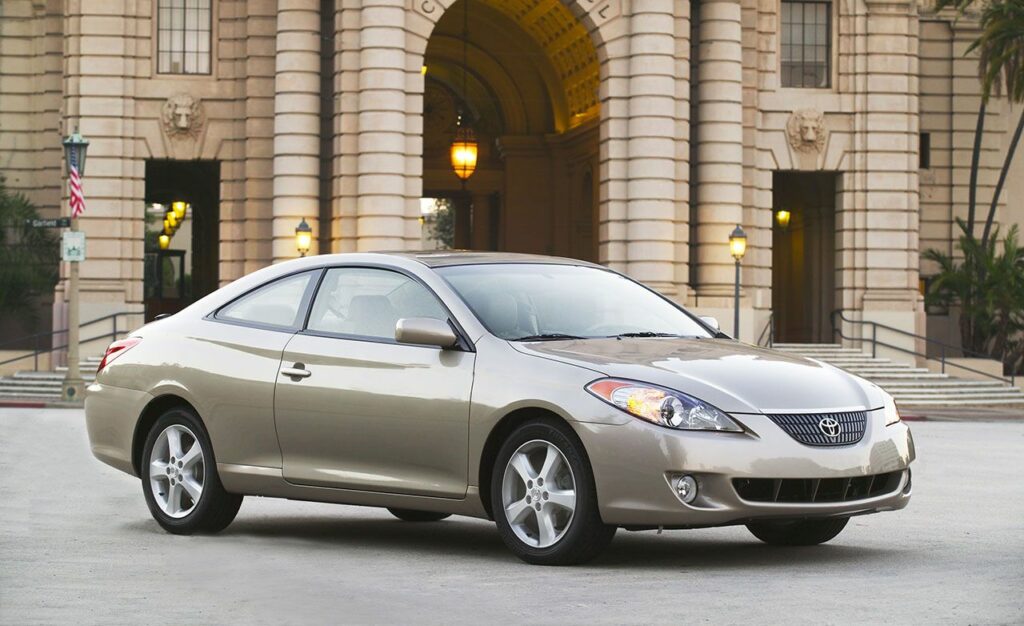
In 1999, Toyota unveiled the Camry Solara, a coupe model that provided consumers with an agile yet cost-effective option. In 2000, a convertible variant was released with two new body colors and ULEV low-emission credentials. The only changes for 2001 were updates to trim levels and packages.
The 2002 Camry Solara was upgraded with a 2.4-liter four-cylinder engine, a restyled grille, fresh bumpers up front and back, updated headlights and taillights, a reworked steering wheel, standard LED daytime running lights, and a keyless entry system. In 2023, the manual gearbox was discontinued on V6 variants.
In 2004, a completely redesigned Camry Solara with improved interior design, higher-quality materials, and a fresh look hit showroom floors. In 2005–2006, trim levels and packages were updated slightly. The 2007 modifications included a redesigned front and back with new head and tail lamps, a new MP3 CD player, Bluetooth integration with satellite radio, a tire-pressure monitoring system, and front-side airbags. It was discontinued in 2008.
4. Toyota Celica
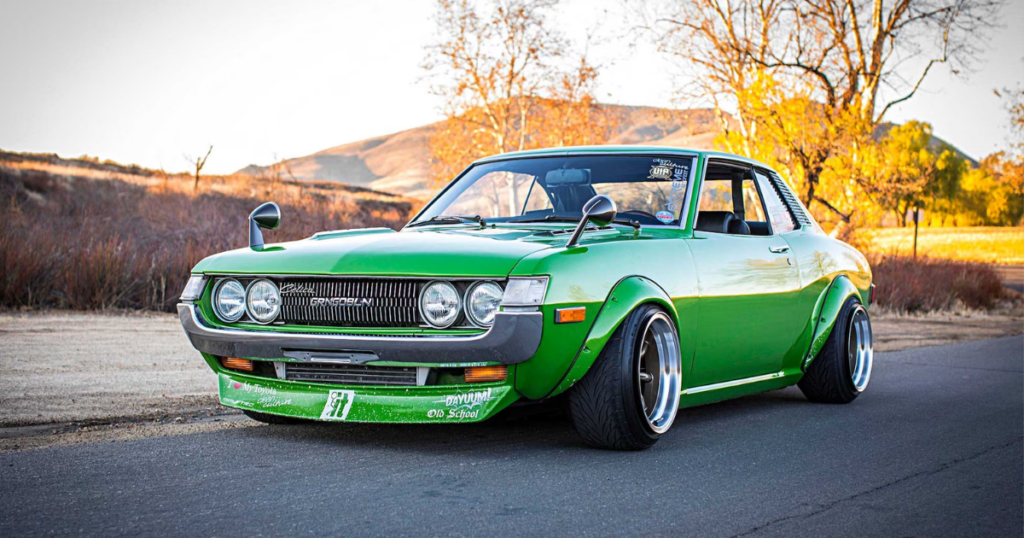
The Toyota Celica was manufactured by Toyota from 1970 until 2006. The word “celica” comes from the Latin “coelica,” which means “heavenly” or “celestial.” In Japan, the Celica could only be bought at the Toyota Corolla Store dealer chain.
The seven-generation Celica was built with a range of four-cylinder engines and came in convertible, liftback, coupé, and notchback coupé body styles. The first three generations of Celicas sold in North America were powered by variants of Toyota’s R series engine.
The rear-wheel drive was replaced with the front-wheel drive in August 1985, and turbocharged all-wheel drive variants were available from 1986 until 1999. Variable valve timing was introduced in December 1997 in some Japanese vehicles and became standard in 2000. It was discontinued in 2006.
5. Toyota Corona
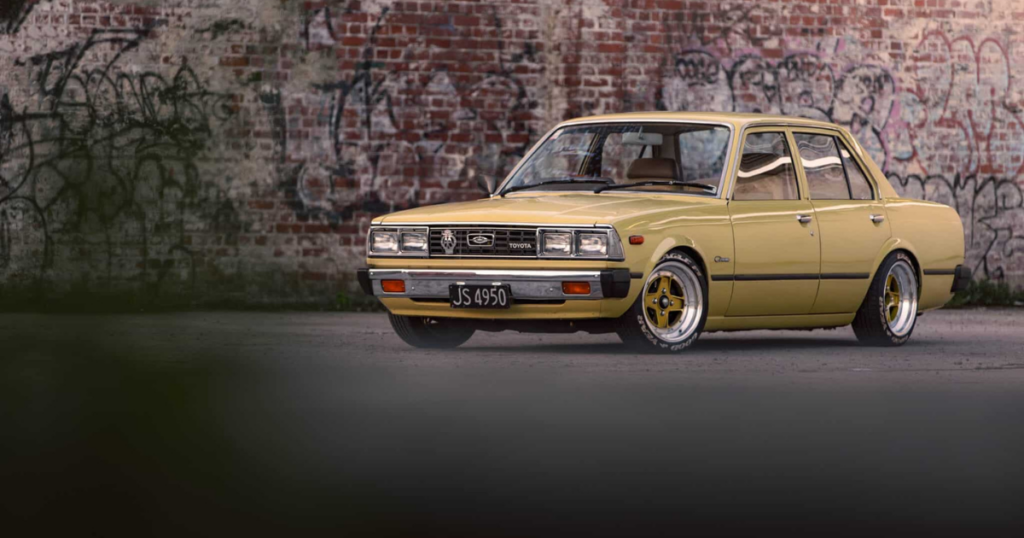
Among Toyota’s most recognizable sedans, the Corona was in production for eleven versions from 1957 until 2001. A major player in America, it was released as the Toyopet in 1961 and renamed the Toyota Corona in 1964. In 1957, Toyota introduced the first-generation Corona with Crown and Master parts. The second-generation Toyota Corona was called the Toyota Tiara when exported.
The third generation Toyota Corona had several different body styles, including a five-door hatchback, two-door hardtop, three-door van, five-door station wagon, two coupe variants, and sedan. After a brief period away from America, it returned to the market in 1965. The fourth-generation classic Toyota underwent a major upgrade. In the fifth generation, the Corona T-100 Series received a redesign and three engine options (1.6, 1.8, and 2.0 liter).
The sixth generation Toyota Corona had rear-wheel drive and was the first to be offered as Toyota instead of Toyopet in Japan. Sadly, this was the last generation offered in the United States. However, the Toyota Corona was far from finished in Indonesia, New Zealand, and Japan. It continued for five more generations until 2001, when it was removed from the markets.
6. Toyota Cressida
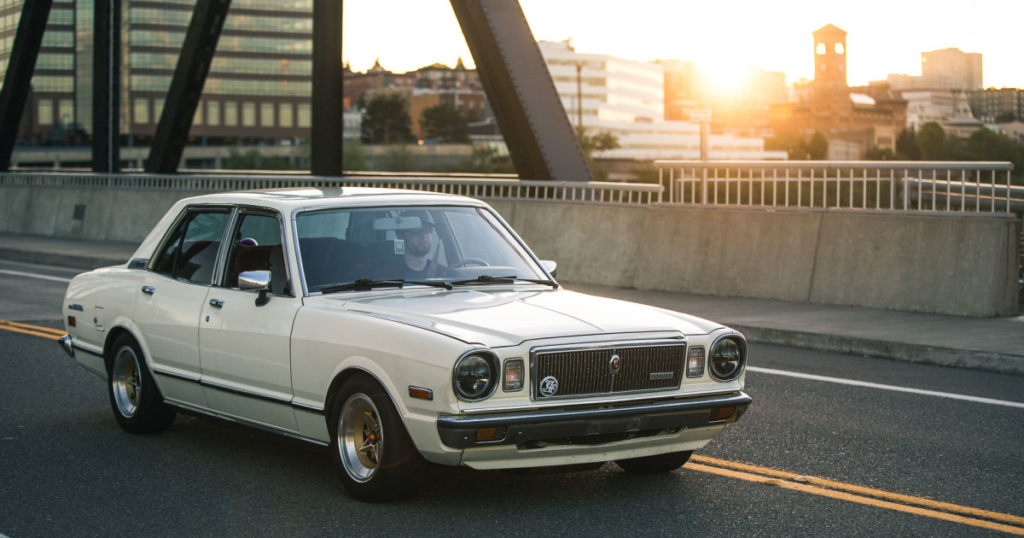
The 1980s were all about the Toyota Cressida, a luxurious sedan with a sports car engine. The Toyota Cressida was well-liked by drivers because of its sturdy construction. In 1977, the renowned Toyota Cressida’s first generation debuted in the US. It was also released in other countries under the names Cresta, Chaser, and more. The Cressida was advertised as “the most trouble-free new car sold in the U.S.” in America.
The Toyota Cressida’s engine was derived from the popular Toyota Supra: a 7M 2.5-liter inline six. With the help of its strong engine, the Toyota Cressida could reach 60 mph (96 kph) from 0 in just 8.5 seconds, which was very fast for the time.
The Toyota Cressida reached its peak in the 1980s. The vehicle made driving a luxurious vehicle accessible to anyone, and sales reached an unprecedented level. However, its reign was short. Toyota decided to concentrate on its premium brand and discontinue this popular and affordable vehicle in the early 1990s. Due to its short sales tenure, many drivers forgot about the Toyota Cressida, making it one of the most underestimated automobiles ever.
7. Toyota Echo

When the Toyota Echo was first debuted in 2000, it was a new automobile in the lineup, had a big cabin, and was also fuel-efficient. For the 2001 Echo, the only changes were a new body color and optional side airbags.
The primary upgrades for 2001 included updated front and back fascias, new fenders and bumpers, a new chromed grille, new rear tail lamps, a new trunk lid, and stylish new headlamps. There were no notable changes between the model years 2001 and 2003. In 2004, a new wheel cover design was introduced.
It’s believed that the Echo’s resemblance to the Tercel gave Toyota a sales boost. The Tercel was well-liked by many due to its reputation as a sturdy and trustworthy compact vehicle. Still, the momentum was gone quickly. By 2002, sales had dropped to half of what they had in 2001. In 2004, less than 4,000 Echos were sold, and that is when it was discontinued.
8. Toyota FX/FX16
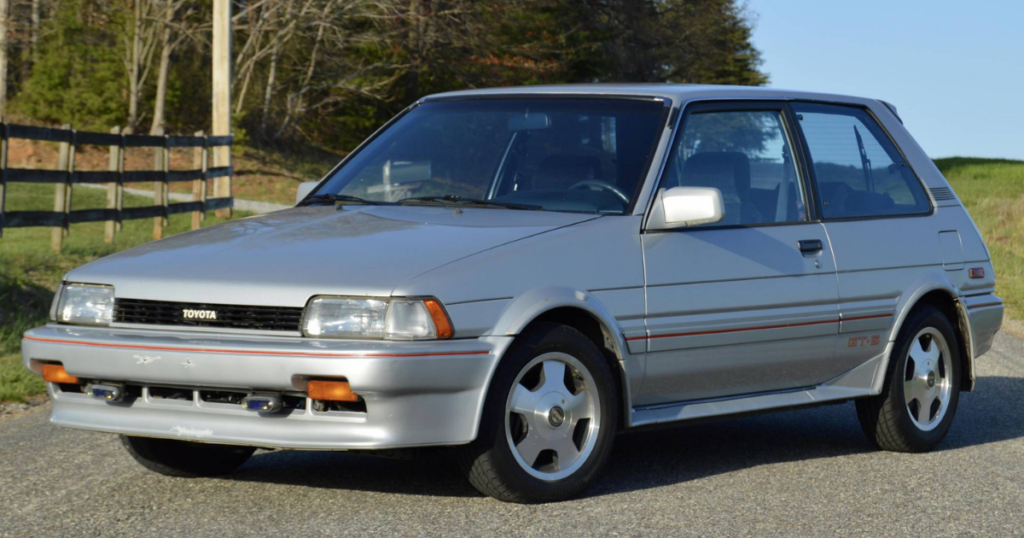
As expected from a Toyota, the Corolla FX16 was sturdy, functional, and fuel-efficient. It had all the features you wanted in a hatchback. Lightweight and agile, the 1987 Toyota Corolla FX16 was fun to drive on a winding road. It was a delight to fling around due to its lightweight chassis and superb steering. The FX16 was a blast to ride, but it was never quick, even back in its day.
The Corolla FX16 shared its 1.6-liter 16-valve four-cylinder engine with the rear-drive Corolla GTS and the MR-2, two of Toyota’s greatest performance cars. The Corolla FX16 wasn’t really intended for stop-light drag races, but its 108 horsepower was good enough for a sub-10-second 0-60 mph (96 kph) run.
9. Toyota Mark II
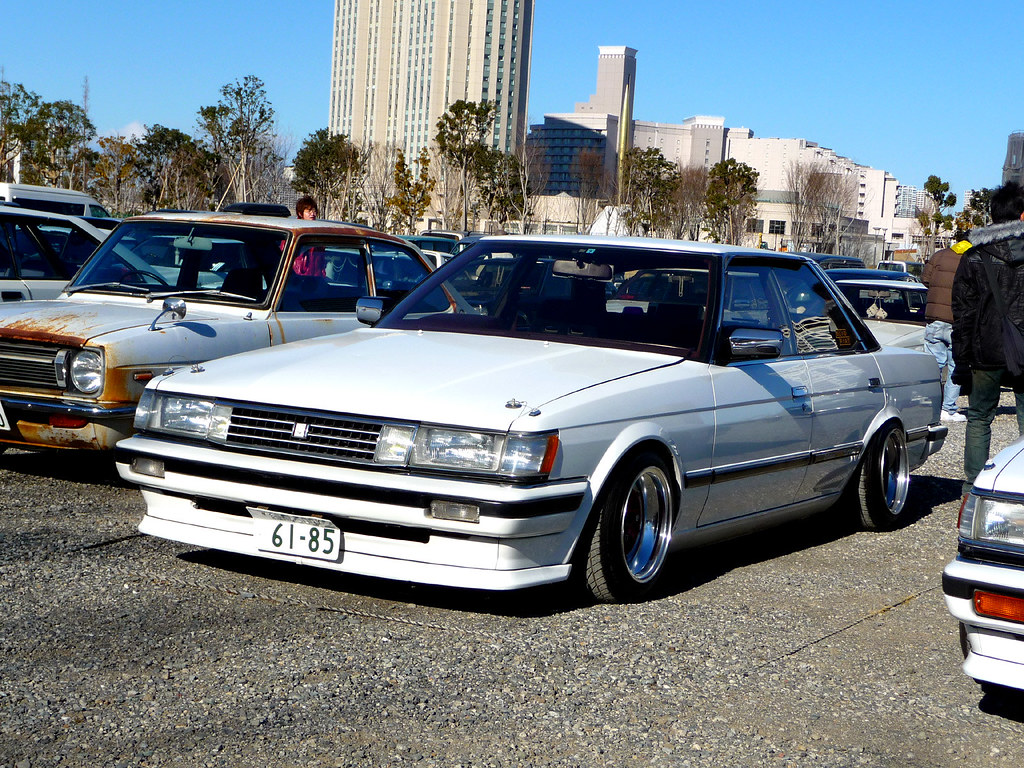
The Toyota Mark II was designed to show that Toyota was more than just an economy automaker. Some cars, like the Toyota Crown, tried to show that idea, but they were a bit too big for Japanese size, weight, and space rules. After that, they reversed course and introduced the Mark II, a fully equipped midsize car with enough options to qualify as luxurious.
The Mark II nameplate was introduced in 1968 and continued for 36 years, through 9 generations. It gained several nicknames depending on the trim levels, which ranged from affordable luxury to slightly Americanized sports cars. Its engines ranged from a 1.7-liter inline-4 for road tax compliance in Japan to a 2.6-liter 6-cylinder for export markets only, producing 109 horsepower and improving fuel efficiency during the oil crisis.
10. Toyota Matrix
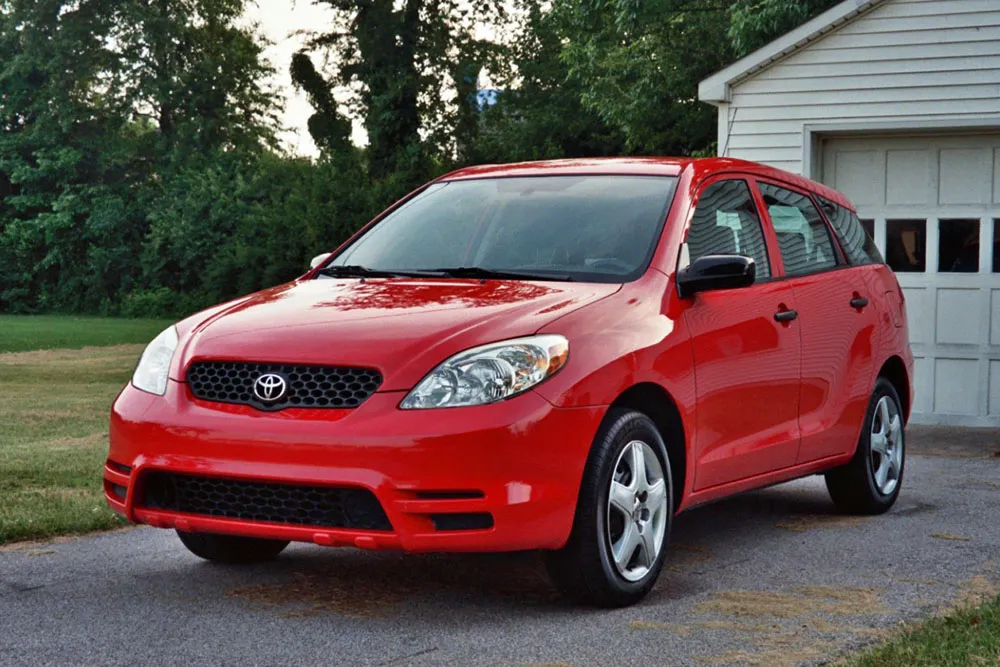
The 2003 Toyota Matrix, which debuted in February 2002, was a crossover utility vehicle (CUV) that combined the style and fun of a sports coupe with the space and utility of a small SUV at the price of a compact sedan. Three model grades were available: standard, XR, and XRS.
Both the standard Matrix and the Matrix XR were powered by a 130 horsepower 1.8-liter engine and were available in front-wheel drive (FWD) or four-wheel drive (4WD). The XRS was only available in front-wheel drive. The 2004 Matrix was carried over with minor changes. Matrix received new front styling for 2005, including a redesigned grille, bumper, fog lights, and new tail lamps.
For model years 2006-2008, there were no significant updates. The 2009 Matrix debuted with a new 2.4-liter engine and all-wheel drive. In 2010, there were no updates, but in 2011, all-powered accessories, cruise control, folding mirrors, and rear-seat heat ducts were added as standard features. While there were no major updates in 2012, a new audio system was added in 2013.
11. Toyota Paseo

Many cars have lost their value and appreciation over the years. The Toyota Paseo is one of them. The car never achieved the kind of market success it had hoped for in the initial years of its production, which began in 1992. The first generation Paseo had a 1.5-liter engine that produced 90 horsepower. Despite having a low horsepower rating, the car was quite fast for such a small engine.
Toyota’s main selling point, which they hoped would outsell the Paseo, was the gas mileage. It got 30 mpg, which was much better than the industry average of 25 mpg. Toyota has released two more generations of the Paseo since its initial release. One in 1996 provided more exterior seamline. However, there are no differences in engine size. Another was released in 1997 with a convertible top, which was very fitting.
Because none of the three models performed well in the market, Toyota discontinued the Paseo and focused on bigger things. As a result, this small sports car is no longer available.
12. Toyota Previa
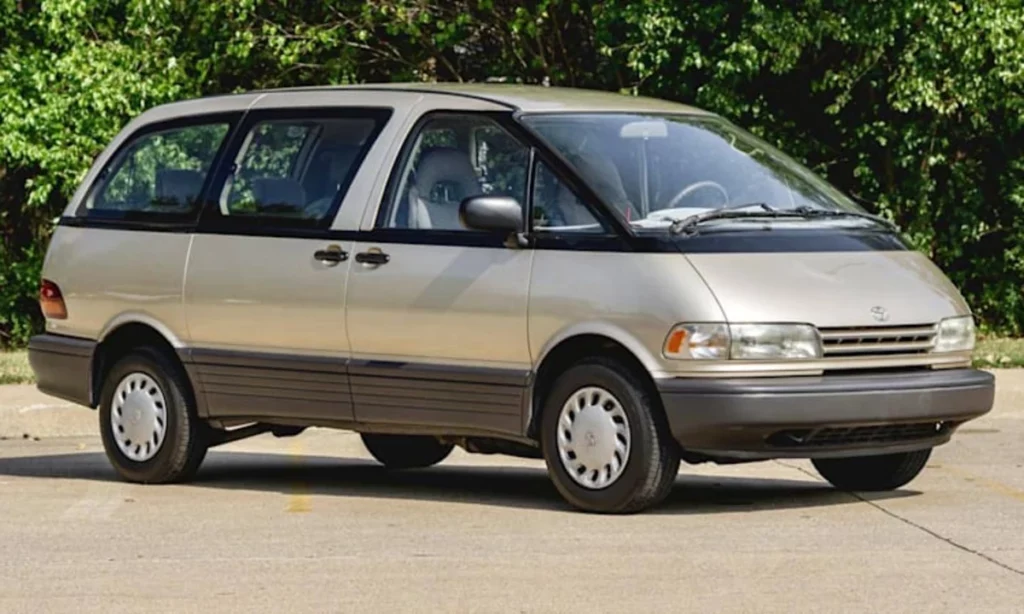
Toyota produced the Previa minivan in the United States from 1991 to 1997. Even though you don’t often see it out and about these days, its distinctive oblong shape makes it easy to spot. Unlike most minivans, the Toyota Previa offered a supercharged engine as an optional feature.
The Previa was capable of 161 horsepower and 204 lb-ft of torque. It also had a manual option at one point, but that was discontinued when the supercharged engine was introduced. In addition, the base model included a manual transmission and rear-wheel drive, two additional features typically found on performance vehicles.
Previa’s best year for sales in the U.S. was its first year, when 52,099 units were sold. After that, sales went down almost every year. Toyota only sold 3,780 Previa cars domestically by 1997. Consequently, the manufacturer stopped making it after that model year.
13. Toyota Prius V

Toyota developed a range of hybrid cars based on the revolutionary Prius, capitalizing on the Prius’s popularity. In 2012, Toyota debuted the Prius V, a more spacious model that was the first offshoot of the new Prius family plan. The Toyota Prius V is barely five inches longer than the standard Prius design, adopting a rear section resembling a wagon.
Its longer length made it a more appealing hybrid for families, allowing for up to 67.3 cubic feet (1.9 cubic meters) of cargo space. Using a 1.8-liter four-cylinder gasoline engine coupled with two electric motors, the Prius V maintained the same Toyota Hybrid Synergy Drive system as the standard Prius.
With a combined horsepower of 134, the Toyota Prius V’s hybrid system was practical and economical, achieving up to 44 mpg in city driving. In 2015, the Toyota Prius V got a significant redesign. In 2017, Apple introduced Siri Eyes Free technology to an upgraded Entune music system.
14. Toyota Starlet
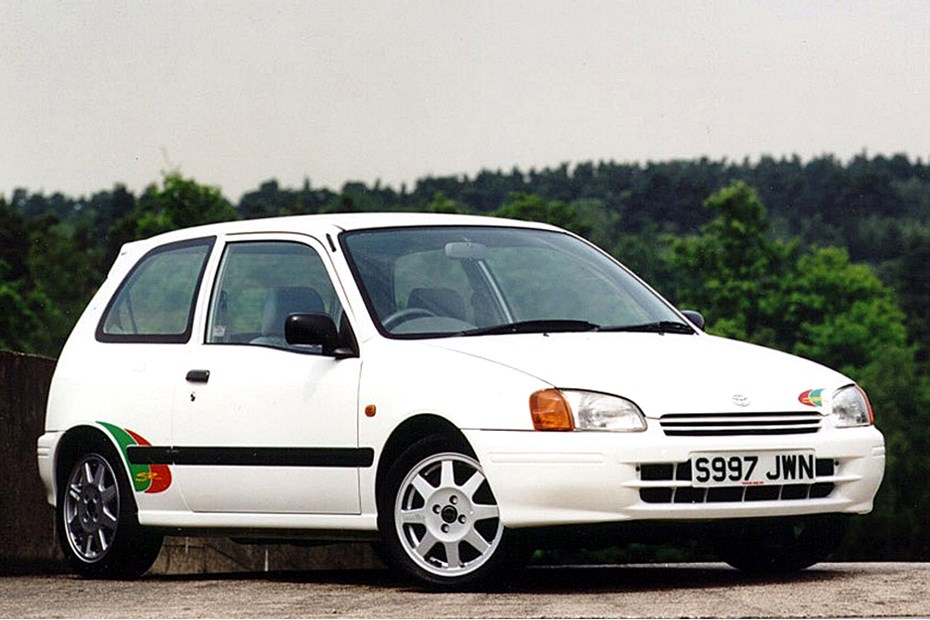
There’s a Japanese automobile that has not left the manufacturing line since 1999. The Toyota Starlet was first produced for the mainstream market, but the racing community soon took a shine to it. The Toyota Starlet spans five generations and was introduced to the US market in 1981. But it didn’t become famous in the race scene until the 1990s.
Built to lead in fuel efficiency, the Starlet achieved a maximum of 57 mpg in 1983. Its 1.3-liter inline-four fuel-injected engine was paired with a five-speed manual transmission. After a few years, the Toyota Starlet was released onto the foreign market and turned into a JDM vehicle. Production started in the United States in 1984.
The Toyota Starlet joined the racing world with Recaro seats, ABS, and a strut bar in the back. The upgraded 16-valve engine generated 133 horsepower. Before the model’s retirement in 1999, it participated in drag racing, slalom, and autocross competitions, winning the A5 class of the World Rally Championship.
15. Toyota Hi-Lux/Truck
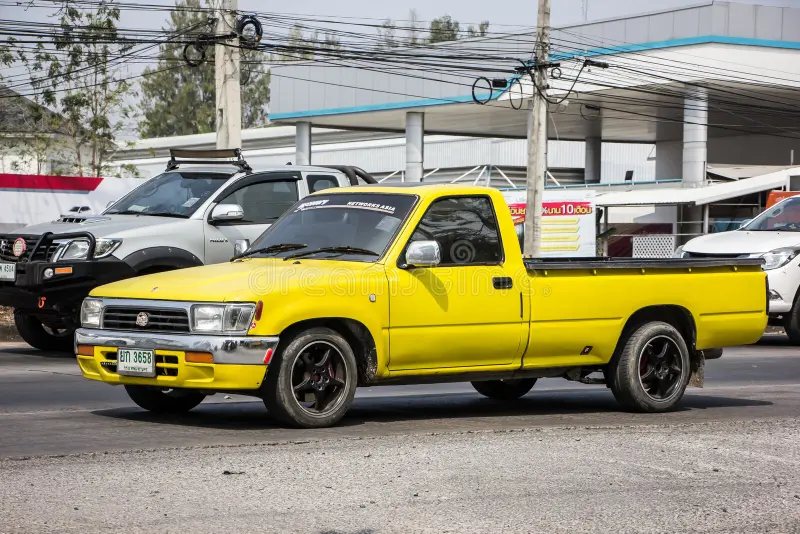
The Toyota Hilux has endured the test of time since its introduction in 1968. The Hilux has been redesigned and upgraded for decades to meet market demands. The Toyota Hilux has continuously improved and added new features throughout its eight-generation run. The Hilux has demonstrated its adaptability, reliability, and modern aesthetic with every version.
Toyota introduced the first iteration of the Hilux in 1968. Impressive for its day, the 1.9-litre engine facilitated the rapid towing and transportation of goods. Between 1968 and 1972, it was available as a rear-wheel-drive 4-speed manual.
The 2016 Toyota Hilux marked the arrival of the eighth and current generation of Hilux trucks. There are now two engine options: a 2.8-liter turbo diesel with a 6-speed auto transmission and a 2.4-liter turbo diesel. The latest model is the 2023 Toyota Hilux.
Conclusion
Toyota has a legacy of providing the most efficient, luxurious, and affordable vehicles. In case you want to have a detailed history of all the classic Toyota models, we have done the hard work for you. In this article, we have listed the best 15 classic Toyota models of all time. We hope you will enjoy reading it.
No comments:
Post a Comment